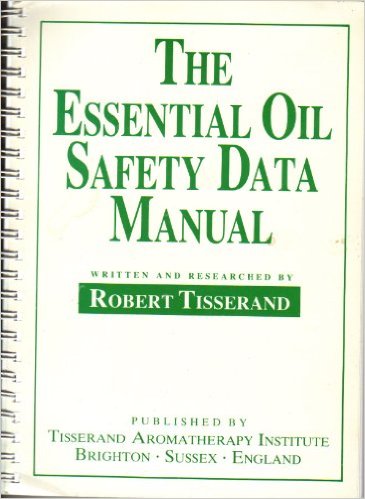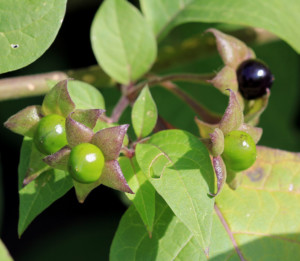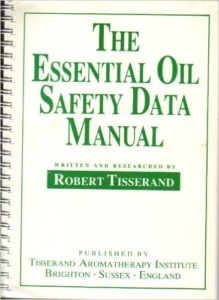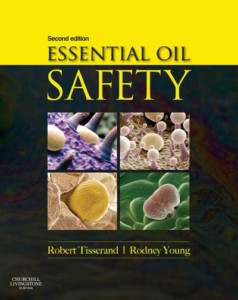by Robert Tisserand
Although essential oils are natural substances, “natural” and “safe” have never been synonymous. Nature is replete with poisonous plants (deadly nightshade, wolf’s bane, foxglove, suicide tree, etc.) not to mention spiders, snakes, scorpions etc. Natural bitter almond oil even contains cyanide, though it has been illegal to sell this since 1890, unless the cyanide is first removed. Before that, buying a 1 oz bottle at a drug store was an easy route to suicide.
This is an extreme example, but there are many potential safety issues with essential oils. These include drug interactions, fetotoxicity, liver toxicity and neurotoxicity, but the most common and tangible safety issue is adverse skin reactions. And the most vulnerable group is children under 6 years of age.
A brief history
Safety has been a passion of mine for more than 30 years. When I first got involved in aromatherapy in the late 1960s there was virtually no awareness of safety issues, but for good reason – very little research had been carried out at that point. This changed in the early 1970s, when the International Fragrance Association (IFRA) was founded, and started publishing safety monographs on both essential oils and individual constituents.
I felt a responsibility to disseminate safety information, and in 1985 I self-published a small book: The Essential Oil Safety Data Manual. It was mostly based on the IFRA monographs. In 1995, I co-authored Essential Oil Safety, a much more in-depth work that went far beyond the IFRA monographs. In 2014 the vastly expanded second edition of this book was published, which took Rodney Young and myself 12 years to write. During that time, enough research was conducted to enable us to criticize some of the IFRA safety guidelines.
(One of my criticisms is that the IFRA approach is over-sophisticated and over-extrapolates from animal studies using single constituents to whole essential oils and humans. But in part this is an academic argument – the fact remains that many essential oils present very real risks to humans. And, much of the IFRA research on skin safety is in fact based on using whole essential oils on humans.)
The point I am trying to make here is that little was known in the field of aromatherapy, and its safe usage, almost sixty years ago but that situation has changed dramatically over time, and of course it continues to evolve.
We now have a plethora of research studies that show us how essential oils can be helpful, but also how they can be harmful. Sometimes the same action can be both – for example, oregano oil kills bacteria by disrupting the bacterial wall, but has a similar effect on skin cells, which manifests as skin irritation. In this type of scenario, dilution needs to be optimal, in other words we want the amount that will kill unwanted microbes but with a minimal skin irritation.
The need for self-regulation
One challenge facing aromatherapy is the gradual increase of adverse events – adverse skin reactions or poisoning – that has accompanied the increase in popularity of essential oils. This, along with often baseless claims for treating serious disease, gives aromatherapy a bad reputation, and is a short-cut to increased regulation of essential oils, something that is already happening in Europe.
Self-regulation is a far better road. The Fragrance Industry has accomplished this through IFRA, but there is no professional or trade association for aromatherapy anywhere in the world that has a set of safety guidelines. Companies that sell essential oils have almost entirely ignored the IFRA standards (which are there to protect consumers from adverse skin reactions) and each one does its own thing on labels. Consumers who experience adverse events with essential oils cannot be faulted if they are following instructions.
For example, “dilute with fractionated coconut oil” is not really good enough for certain oils. According to IFRA, clove oil should not be used at more than 0.5% and cinnamon bark oil should not be used at more than 0.1% for products such as body oils and body lotions. In a 2015 Tisserand Institute survey we found that 17% of respondents who topically applied diluted cinnamon bark oil reported having an adverse reaction. Most of them had not diluted the oil sufficiently.
Essential Oil Safety 2e could easily be the foundation for Aromatherapy Industry safety guidelines. In fact there really isn’t anything else to use as a platform, apart from the IFRA and EU guidelines, which (a) are insufficient to cover aromatherapy, and (b) are often unnecessarily restrictive.
US poison center reports
Figure 1 shows the number of adverse incidents from essential oils that were reported to poison centers in the USA 1995-2015. Most of these were not serious, and most were accidental, but they show a worrying upward trend for children under 6, compared with older children or adults. This suggests that young children are becoming “victims” of the growth of the aromatherapy industry, which is now worth several billion dollars per year worldwide.
Although 2015 saw 14,866 reports of essential oil toxicity to US poison centers, most of these (as in previous years) are listed as having “no outcome” which is jargon for non-events – nothing to be concerned about. In Figure 2, I have shown the number of actual adverse events for all age groups (2,785 for 2015), and you will see that most of these are listed as “minor”. The other categories are “moderate”, “major” and “death”. Fatalities are very rare, there have been seven between 1995 and 2015 inclusive. It is possible that many of the “minor” events are in fact adverse skin reactions.
The sad truth is that most of these adverse events would be avoided if safety guidelines were (a) widely disseminated and (b) followed. “People don’t read labels” is a criticism I often hear, and of course there’s some truth in this, but it’s really not an argument for doing nothing.
For children under 6, a large number of incidents come from accidental essential oil ingestion, and these are totally preventable. Essential oils should never be handled by young children, should always be kept in a place they cannot reach, and child-proof bottle caps should be a requirement for most essential oils.
We could say that essential oils are much safer than prescription drugs, which is generally true, but that does not change the fact that an average of 30 people per day report an adverse reaction to essential oils. And these are only the ones reported to poison centers. Out of all the people who have contacted me about adverse reactions, only a handful might make it into the statistics.
Since the popularity of aromatherapy continues to grow, it’s perhaps not surprising that adverse events are also increasing. But this means extra caution is needed, especially in regard to young children, but really in all areas. Otherwise an increasing number of people will get hurt, and over-restrictive legislation will be almost inevitable. Which is why the Tisserand Institute has Safety Pages.








After joining an essential oil company last week I was doing some research and come across a few things that made me think about the morals of the company or perhaps the MLM members who are selling the products. I feel that there was not enough safety awareness around the oils and that people are just prescribing oils to people like they are doctors. This makes me want to know more so that I can use the oils properly and give the right information about them. This has been a great insight and I will be purchasing your book in the very near future.